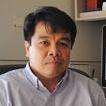
Research Topics
Nuclear magnetic resonance (NMR) spectroscopy is a powerful tool to probe biomolecular structures in solution. However, NMR cannot provide a direct image of the structures themselves; rather it generates a large number of signals characterizing the atomic interactions within a structure that are then used to computationally determine a structure to account for those interactions. Dr. Tjandra focuses on the basic physical chemistry that can be captured by NMR in order to answer questions about biomolecular interactions. In particular, he wants to improve the ability of NMR to study protein complexes in their proper context, i.e. as part of multi-component systems in complex lipid environments.
Dr. Tjandra focuses his technological efforts on a few important biological problems. One is the Bcl-2 protein Bax, which is a critical component in programmed cell death. As cell death is activated under a variety of normal developmental and pathologic conditions, Bax translocates from the cytosol into the mitochondrion. Dr. Tjandra is studying how Bax transforms from a soluble protein in the cytoplasm to a membrane-associated protein that irreversibly promotes cell death.
The proteins that form viral particles are another area of interest for Dr. Tjandra. During viral replication, these proteins assemble and interact with the host membrane to bud off forming infectious particles. Dr. Tjandra is studying how viral proteins aggregate into specific shapes (e.g. eicosahedral or conical) and how that organization relates to viral function.
Additionally, in collaboration with colleagues, Dr. Tjandra is studying how the assembly of the cytoskeletal protein actin is regulated. They are studying how the complex between actin filaments and actin capping protein (CP) can be modulated by other regulatory proteins. The goal is to understand how protein-protein interactions involving CP can manage a relatively fast actin polymerization response to cellular stimuli. More specifically, Dr. Tjandra is looking at how conformational changes in CP itself can affect actin binding.
Dr. Tjandra has successfully introduced several innovations to solution NMR. For example, to increase the ability of NMR to probe larger macromolecules, Dr. Tjandra and colleague Ad Bax (NIDDK) introduced the use of residual dipolar couplings (RDCs). RDCs provide longer-range interaction information than the signals that are classically measured in solution NMR (the transfer of energy between nuclear spins); RDCs also provide orientation rather than just distance information. However, they had not been used to determine structure previously because their signal averages to zero for molecules in solution. Dr Tjandra realized that by placing molecules of interest in solution with a matrix such as bicelles or collagen, i.e. a liquid crystal, RDC signals could be resolved.
Currently, Dr. Tjandra is improving the ability of NMR to capture dynamic information. It is becoming increasingly clear that changes in the dynamic behavior of a protein dictate its function. NMR can capture information about the movement of proteins in solution, but that information can come from multiple dynamic processes occurring at different time scales. His goal is to develop NMR methods that can separate those contributions to provide detailed dynamic information over a broad range of time scales ranging from nano- to milliseconds. That information, together with the solution structure, will provide a more complete picture of the molecules in their physiological environment.
Biography
Nico Tjandra graduated with a M.S. in physics and Ph.D. in physics/biophysics from Carnegie Mellon University. He was a National Research Service Awards postdoctoral fellow at the National Institute of Diabetes, Digestive, and Kidney Diseases (NIDDK) at the NIH. He became a tenure-track Investigator in 1997 and was promoted to Senior Investigator in the Structural Biophysics Section in 2001. He received the International Council of Magnetic Resonance in Biological Systems Founder’s Medal in 2005. Dr. Tjandra has authored or coauthored more than 150 papers and book chapters. He has also organized a hands on summer course at the NIH, “Structure Determination of Biological Macromolecules by Solution NMR,” designed for extramural Ph.D. students who could benefit from learning new methodologies in NMR for their thesis work. He is one of the long-time instructors in the EMBO practical course on studying biomacromolecules by NMR.
Selected Publications
- Morris DL, Kastner DW, Johnson S, Strub MP, He Y, Bleck CKE, Lee DY, Tjandra N. Humanin induces conformational changes in the apoptosis regulator BAX and sequesters it into fibers, preventing mitochondrial outer-membrane permeabilization. J Biol Chem. 2019;294(50):19055-19065.
- Strickland M, Ehrlich LS, Watanabe S, Khan M, Strub MP, Luan CH, Powell MD, Leis J, Tjandra N, Carter CA. Tsg101 chaperone function revealed by HIV-1 assembly inhibitors. Nat Commun. 2017;8(1):1391.
- Strickland M, Stanley AM, Wang G, Botos I, Schwieters CD, Buchanan SK, Peterkofsky A, Tjandra N. Structure of the NPr:EINNtr Complex: Mechanism for Specificity in Paralogous Phosphotransferase Systems. Structure. 2016;24(12):2127-2137.
- Gahl RF, He Y, Yu S, Tjandra N. Conformational rearrangements in the pro-apoptotic protein, Bax, as it inserts into mitochondria: a cellular death switch. J Biol Chem. 2014;289(47):32871-82.
- Kale S, Strickland M, Peterkofsky A, Liu J, Tjandra N. Model of a Kinetically Driven Crosstalk between Paralogous Protein Encounter Complexes. Biophys J. 2019;117(9):1655-1665.
Related Scientific Focus Areas


Molecular Biology and Biochemistry
View additional Principal Investigators in Molecular Biology and Biochemistry

Biomedical Engineering and Biophysics
View additional Principal Investigators in Biomedical Engineering and Biophysics

This page was last updated on Thursday, August 21, 2025